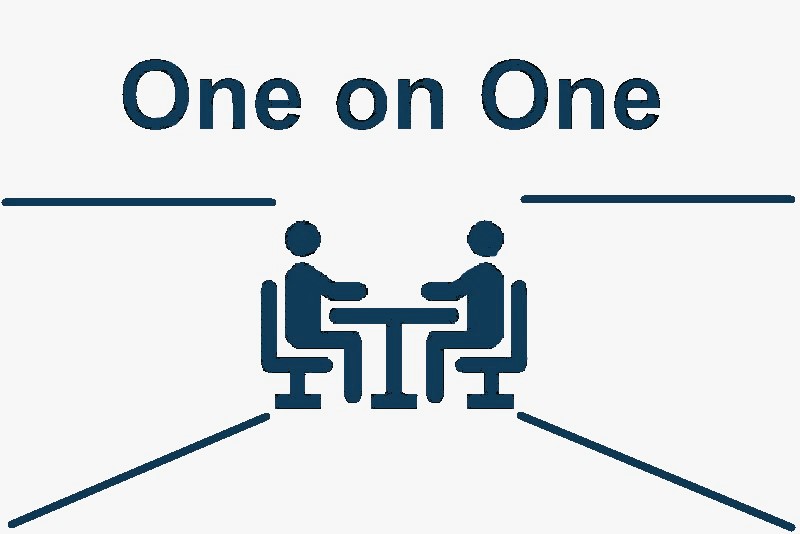My framework for One-on-One Meetings
In the dynamic world of leadership and team management, effective communication is the backbone of success. One of the most powerful tools at the disposal of managers and team members alike is the one-on-one meeting.
[Lorenzo Conti] · 835 words · 4 min read · Oct 1, 2023
As an engineering leader and a certified coach, I’ve had the opportunity to gain extensive experience in one-on-one meetings with team members. I’m here to share my insights on how to make them a valuable and productive experience for everyone involved.
This description is in a constant state of evolution, labeled as ‘perpetual beta’. It doesn’t claim perfection; instead, it’s the product of my experiences in the trenches, marked by numerous mistakes and a few successes.
Purpose
One-on-one meetings are not mere status updates. They serve a more profound purpose:
- Maintain ongoing communication: These meetings are an opportunity to keep the lines of communication open between the manager and the team member.
- Manager’s role: In these meetings, the manager’s primary role is to listen, clarify, and provide support. It’s the place for the manager to deliver feedback to the team member.
- Listening to understand: As a manager, your goal is to understand your team members better. This includes their perspectives on what’s working and what isn’t, their aspirations, and any obstacles they face.
- Discover motivation: Managers should strive to understand why their team members come to work, what they want to achieve, and what’s currently bothering them in their roles.
Scheduling and Frequency
- Agree on the best time: Scheduling a one-on-one meeting should be a collaborative effort. Find a time that works for both the manager and the team member. Flexibility is key.
- Avoid cancellations: While it’s essential to honor your commitments, it’s also acceptable to cancel a meeting if both parties understand and agree that it’s necessary. Clear communication is vital in such cases.
- Frequency: Aim to schedule these meetings every one or two weeks. This regularity allows for consistent communication without overwhelming either party.
- Duration: Allocate at least 30 minutes but no more than 60 minutes for each one-on-one meeting. This timeframe strikes a balance between depth and efficiency.
Agenda Setting
In one-on-one meetings, the team member takes the lead in setting the agenda and topics. They should communicate what’s most important to them. A high-level agenda might include:
- Informal check-in: A warm-up phase to get comfortable and set the tone.
- Results: Discuss achievements, progress, and goals.
- Development: Explore opportunities for skill-building and career growth.
- Feedback for the manager: Encourage open feedback about the manager’s performance.
- Any actions: List any actionable items and responsibilities.
Effective Questions for Managers
No need to say that asking questions is one of the most powerful tool for a leader!
Here are some powerful questions that managers can use to start and structure the meeting, and foster meaningful discussions (from Russ Laraway Radical Candor
):
- What’s on your mind this week?
- How happy were you this past week?
- How productive were you this past week?
- What feedback do you have for the manager?
I personally like to start each meeting with this simple question that allows the team member to take control of the conversation:
- “What is on your agenda for today?”
Here is a useful link with several good questions for one-on-ones: small improvements .
Handling Silent One-on-One Meetings
Sometimes, team members might claim they have nothing to discuss during a one-on-one meeting. It’s crucial not to end the meeting abruptly but to delve deeper into the underlying reasons for their silence. Possible reasons could include a lack of trust, busyness, or even immaturity.
Here’s how to address silent one-on-one meetings:
- Acknowledge: Express understanding and empathy for the situation. Make it clear that you value their input.
- Stay informed: Emphasize the importance of keeping the manager informed about team and organizational health, even if there are no pressing issues.
- Unblock conversations: Use open-ended questions to encourage dialogue, such as:
- What has been on your mind these days?
- What’s the most exciting/interesting thing you’ve worked on since we last spoke?
- What has been the most frustrating thing for you over the past week?
- Support growth: Inquire about their learning goals and how you can assist with technical or soft skills development opportunities.
- Offer help: Always ask if there’s anything you can do to support them. This shows your commitment to their success.
In conclusion, one-on-one meetings are a potent tool for building stronger relationships, fostering communication, and supporting personal and professional growth within engineering teams. By following the agreed-upon framework, setting a clear agenda, and asking meaningful questions, both managers and team members can maximize the benefits of these meetings. Don’t shy away from addressing silence – instead, use it as an opportunity to deepen your understanding and improve collaboration.
Leadership is not a one-size-fits-all approach; it’s a mix of art and science, occasionally spiced with contradictions. I strongly encourage current and aspiring leaders to actively explore and experiment with what suits them at any given moment, always mindful that adaptation to the context is a constant necessity to generate a positive impact.
What’s next?
If you’re ready to take your leadership to the next level, Leadership Boot offers a free discovery call to learn more about how coaching can help you get there!
Book your discovery call